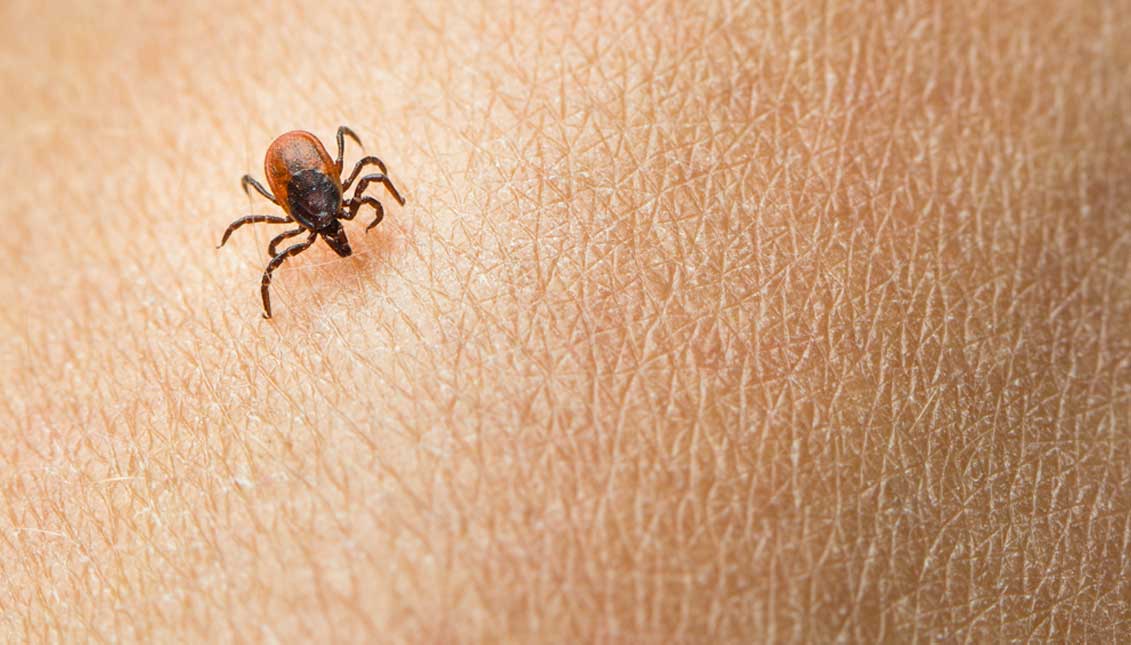
An ounce of tick prevention can spare you a long and painful cure
MORE IN THIS SECTION
Is it because of this now-viral tweet from the Centers for Disease Control and Prevention: "Ticks can be the size of a poppy seed. Can you spot all 5 ticks in this photo? Learn how to prevent tick bites."?
It made social-media users itch so much the CDC "apologized": "Sorry we ticked some of you off! Don't let a tick bite ruin your summer."
No, it was because of the tick I spotted on my little white dog, Sonic -- who was lounging on my bed -- late the other night. Earlier that day we had trekked through the lush greenery of my local dog park.
The sighting set off a chain of events that ended with me wrestling with both Sonic and my other dog, Jetta, until past midnight to ensure all ticks were banished.
I dutifully treated both pups with their monthly dose of parasite-control gel. But then the following evening, after our usual post-dinner walk, I had to pull another tick off Sonic. Now I'm trying to type and I've got phantom ticks "crawling" all over me.
If you think you've been seeing a lot of close-up, vivid images of twitching, eight-legged nightmares with glistening, distended abdomens on the internet and your local news broadcasts, you're not hallucinating it (scratch, scratch).
The whole reason the CDC sought to focus attention on the tiny parasite is that ticks are evil and deadly.
OK, the evil part is pure editorializing on my part. But what else do you call an insect that could latch on to you during a lovely spring walk, bite you in such a tender way that you'd never even notice it and then, a short time later, make you allergic to meat?
Yes, the lone star tick, found mostly in the eastern part of the United States, can make you allergic to a carbohydrate commonly called "alpha gal," which would make you violently ill every time you ate meat. This is in the best-case scenario, mind you -- the lone star tick's bite can also give you brain lesions, seizures, kidney failure or even put you in a coma.
The Rocky Mountain wood tick and the American dog tick can spread Rocky Mountain spotted fever -- hello, nausea, lack of appetite, fever and muscle aches. And they can cause something called tick paralysis, a condition that occurs about a week after a tick has been feasting on your flesh.
You'll know you're in tick paralysis if you experience numbness in the extremities, muscle weakness and then delayed reflexes. Ultimately, it can cause paralysis that could lead to death.
And this is all on top of the most common disease associated with ticks: Lyme disease (more clawing at myself here).
According to the CDC, tick bites cause more than 300,000 Lyme disease diagonses annually, and the number of reported Lyme disease cases has gone up steadily over the past 25 years.
When my husband reads these types of scary statistics, he always says, "Now, really: Have you ever actually known someone who got Lyme disease?"
Yes, an acquaintance of mine got it, and he told me that it was arduous and exhausting. It took him nearly two years to overcome the fatigue, severe headaches, swollen joints, facial palsy, shooting pains and short-term memory loss that plagued him long after his antibiotic treatments had ended.
One theory about why ticks are now a societal menace is that climate change -- particularly warmer weather in previously cooler areas -- has made more regions friendlier for the mini arachnids to breed and feed in.
Either way, take it from someone who almost spent the night with a hungry tick -- keep your eyes peeled. Douse yourself with bug repellant when you're going to be out in nature. Walk in the center of trails and avoid getting into brushy areas with a lot of tall grass or leaf litter.
Invest in some sort of tick preventives for your pets and monitor their gear (harnesses, bandanas, etc.) for stowaways.
Thoroughly check your clothes, your skin (especially near hairlines) -- and your pets' coat, ears and paws -- for tiny dark spots wiggling with delight as they feast on blood. Remove ticks immediately and carefully, so you don't leave any of their body parts in your skin.
And pay close attention to any itches, because when it comes to ticks, a few minutes of prevention could be worth years of painful cure.







LEAVE A COMMENT:
Join the discussion! Leave a comment.